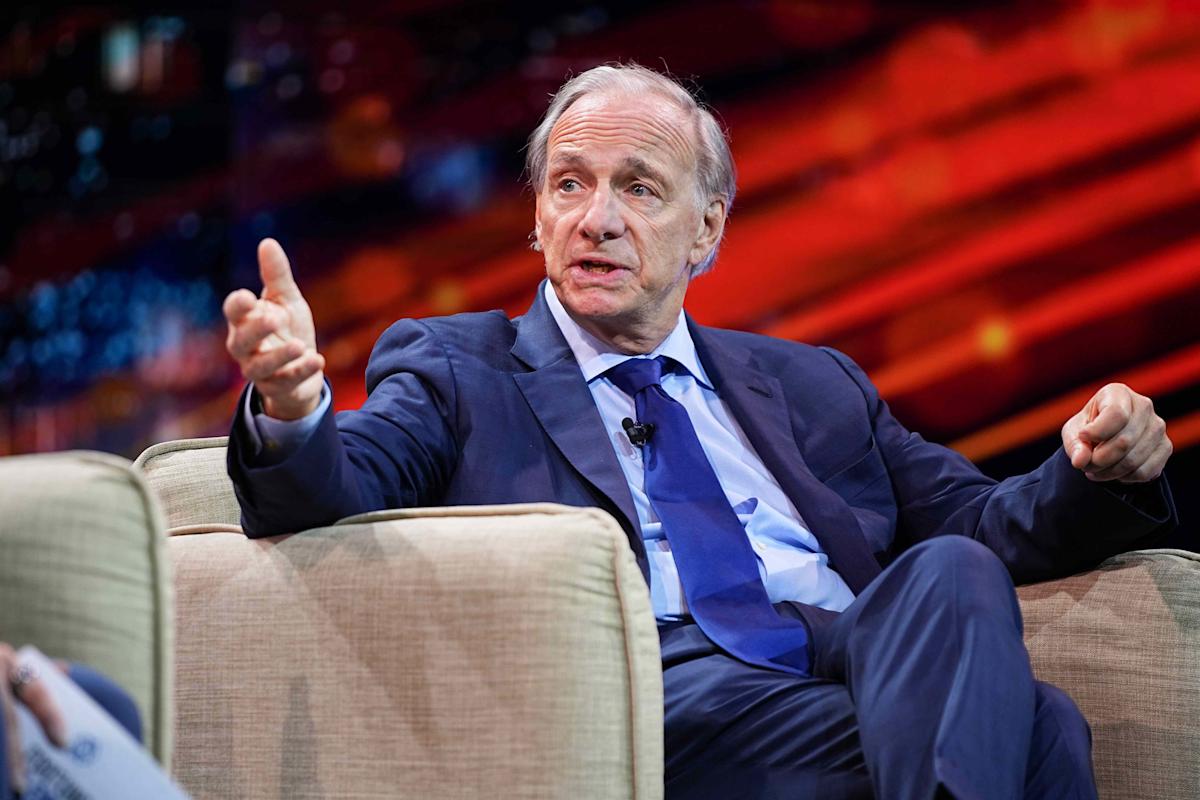‘There’s Definitely a Bubble’ In Markets, Ray Dalio Says. Here’s His Latest Advice.
Amal Alhasan / Getty Images
Legendary investor Ray Dalio says markets are “definitely” in a bubble.
-
Hedge fund legend Ray Dalio says “there’s definitely a bubble in markets” these days.
-
Though the existence of a bubble doesn’t mean one should sell, he said, “be sure you’re protected.”
Thought the market-bubble talk was over after Nvidia’s latest earnings? Nobody told Ray Dalio.
“There’s definitely a bubble in markets,” said Ray Dalio, founder of hedge fund Bridgewater Associates, in an interview with CNBC Thursday morning. “But we don’t have the pricking of the bubble yet.”
Investors may be listening. Major stock market indexes were recently in the red, losing ground gained after Nvidia’s (NVDA) results seemed to ease concerns that the AI rally was caused by hot air. And when the balloon is inevitably pricked, according to Dalio, it will neither be shielded nor caused by one company’s very good—or very bad—numbers.
“Bubbles don’t burst because people wake up one morning and determine that there won’t be enough revenue and profits to justify the price,” he wrote in a blog post Thursday morning.
Nvidia’s earnings report was flashy enough to sooth investor concerns and move market sentiment. But one well-known investor says we’re still in a bubble, even if we don’t know when it’s due to pop.
Rather, he said, bubbles happen when people decide they need to trade financial wealth—like that represented by assets with inflated values—for hard cash. What follows after is a decline in markets, economies, and also major political change, he said.
Dalio isn’t advising investors to sell simply because a bubble exists. He does, however, recommend protection—owning gold, for example, or unloading any “significant credit exposures.”
The ratio of U.S. equity wealth to total money today resembles historical peaks seen in the lead up to the Great Crash of 1929 and the dotcom bubble of the 2000s, Dalio suggested in his blog, implying that that the next 10 years of real returns in stocks—that is, price appreciation adjusted for inflation and other effects—is pretty much zero.
He isn’t alone in forecasting paltry future returns implied by market indicators. GMO’s 7-year forecast, which uses valuations to estimate potential real returns, was already negative as of the end of September; it was 10 basis points worse as of the end of last month, with both U.S. large- and small-cap stocks showing negative real returns whether interest rates remain normal or go lower.
Read the original article on Investopedia



Leave a Comment
Your email address will not be published. Required fields are marked *